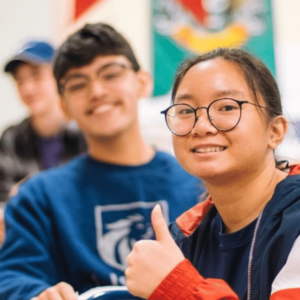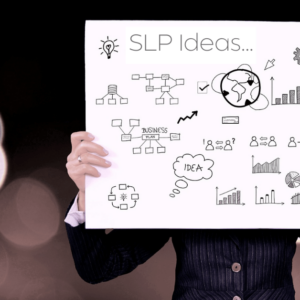Research-based Language Intervention for Older Students
$15.00

Course Type: Video – 1 hour
ASHA Course Code: Developmental Language Disorders – 3010
So much research and materials focus on serving young children. How do we effectively engage, treat, and dismiss students from 3rd grade through high school? This course shares successful intervention techniques to tackle vocabulary acquisition, retention, language skills, and narrative skills.
Building therapy strategies using nonfiction is advantageous because it layers communication goals on top of classroom content, historical events, and social issues. This leads to an increased use of strategies outside of therapy sessions, increased support of academic objectives, and reduced therapy planning time.
| Population | School Age |
|---|---|
| Topics | Exp/Rec Language |
| Duration | 1 hour |
| Credit | .1 Continuing Education Unit |
| Format | Video |
Financial Disclosure: Scott Prath, M.A., CCC-SLP is a salaried employee of Bilinguistics. Bilinguistics receives royalty payments for online courses.
Non-Financial Disclosure: Scott Prath does not have any non-financial relationships to disclose.
This presentation highlights the advantages of how the use of nonfiction can address many speech and language goals and support classroom objectives. In addition to the practical benefits, such as ease in facilitating group intervention, nonfiction is easily applied to all grade levels, increases carryover into the classroom, and reduces planning time.
Nonfiction has long been used as an educational tool. It provides a structure for teaching concepts while keeping students engaged and interested. Story structure additionally assists in retention and retrieval of classroom concepts due to familiarity with stories, repetition, and formulaic patterns. Book themes can be selected to allow students to explore history, great people, and social justice issues. They can learn more about the real world and further their knowledge about current classroom subjects. These benefits of literacy-based lessons also have gained popularity in speech and language intervention.
Nonfiction is beneficial to the work of speech-language pathologists (SLPs) from both an educational and a practical perspective. Nonfiction can be used with all ages and cultures to address a wide range of goals, including articulation, semantics, syntax, comprehension, pragmatics, and discourse skills. Clinicians can work at different skill levels depending on the student’s needs. These skill levels range from decontextualized discrete skills to skills that require more global processing, such as inferring meaning in stories, understanding characters’ feelings, and producing story sequences.
On the practical side, using sets of nonfiction books with activities increases the efficiency of the often busy SLP by decreasing preparation time once the materials have initially been created. Additionally, parents can easily become a part of the treatment process at home, which can greatly improve learning and retention of new skills.
Case studies, videos, and research findings about the use of books in speech-language intervention are presented. Literacy-based activities have been shown to aid in students’ overall development, including social-emotional, language, and academic development. Books can promote social-emotional development by helping students identify with and understand complex emotions, such as guilt, pride, and shame (Doyle & Bramwell, 2006). Shared reading activities can also help provide students with the language necessary to talk about their emotions. Such socio-emotional development has been shown to contribute to students’ academic success (Denham, 1998; Elias, 2003; Zins, 2001). Nonfiction promotes language development by providing concurrent exposure to oral and written language (Teale & Sulzby, 1986). As Westby (1985) noted, narratives provide a bridge between oral communication that contributes to social interaction and writing. This allows students to learn new information and promotes development in different areas that contribute to academic success.
In addition to reviewing current theory and literature related to the use of nonfiction in intervention, we will provide models for creating your own activities. These models are a few of the activities that can be used in practice. The possibilities for effective and fun intervention are endless.
Participants will:
Summarize basic research findings on executive function development of older
students which relate to communication and retention of academic concepts
Identify critical components of narrative development at the secondary level
Design intervention activities using nonfiction and classroom concepts
List five therapeutic strategies shown to increase vocabulary retention
Time-Ordered Agenda:
05 minutes: Introduction
10 minutes: Adapting therapy to support science and math curriculum
10 minutes: Vocabulary development and retention
20 minutes: Cognitive therapy approaches for communicating and retaining academic
knowledge
10 minutes: Implementation of successful nonfiction literacy-based intervention and
successful interaction with educational professionals
05 minutes: Closing and questions
Need CEUs?

 Share
Share
 Tweet
Tweet
 LinkedIn
LinkedIn
 Pin
Pin
 Email
Email





